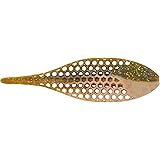The wilderness, with its endless challenges and profound beauty, often compels us to rediscover fundamental skills for self-reliance. When facing the raw elements, finding and preparing sustenance becomes a paramount task. The tranquil, yet deeply instructive, actions observed in the accompanying video—from the careful selection of wild fruits to the patient art of fishing and the satisfying creation of rustic river meals—underscore this timeless pursuit. This episode beautifully illustrates the focused dedication required to thrive, not just survive, in an isolated natural setting, showcasing a mastery of bushcraft that resonates with anyone drawn to the outdoors.
For many, the idea of sourcing food directly from the wild can seem daunting. Where does one begin? How can one differentiate between edible and toxic plants? What primitive fishing techniques genuinely work? This guide expands on the skills demonstrated, offering deeper insights into the practicalities and principles behind procuring food in the wilderness, turning what might seem an insurmountable challenge into an achievable and rewarding endeavor.
The Art of Foraging: Identifying Wild Fruits for Sustenance
Wild fruits offer a vital source of vitamins, minerals, and natural sugars in a survival situation. The video shows a deliberate process of picking, suggesting knowledge and careful selection. True foraging is much more than simply gathering; it is an intimate understanding of the local ecosystem, recognizing what grows where, and, critically, what is safe to consume.
Key Principles of Safe Foraging
- Positive Identification is Paramount: Never consume a wild plant unless you are 100% certain of its identity and edibility. Many edible plants have poisonous look-alikes. Resources like field guides specific to your region are invaluable tools.
- The Universal Edibility Test: In extreme situations where identification is impossible, a slow, methodical test can be employed, but it is risky and should only be a last resort. This involves applying a small portion of the plant to the skin, then lips, then tongue, waiting for adverse reactions at each stage.
- Seasonal Awareness: Fruits are seasonal. Understanding the local flora’s fruiting cycles increases your chances of success. Berries, for instance, are often ripe in late summer and early autumn.
- Common Edible Wild Fruits: Depending on the region, common edible wild fruits include various berries like blueberries, raspberries, blackberries, and huckleberries. Wild grapes and some types of wild plums or cherries can also be found. Always research your specific location.
Foraging provides essential carbohydrates, which are crucial for energy in physically demanding wilderness conditions. The fructose from wild berries gives a quick energy boost, while their fiber content aids digestion. Beyond mere calories, wild fruits often boast a higher concentration of antioxidants and other beneficial compounds compared to cultivated varieties.
Mastering the Catch: Primitive Fishing Techniques
Fishing in a river, as the video depicts, can be a highly effective way to secure protein. Fish are a readily available food source in many environments and are relatively easy to process. Primitive fishing relies on ingenuity, patience, and a deep understanding of fish behavior and habitat.
Effective Primitive Fishing Methods
- Hand-lining: This fundamental method requires only a line, a hook (improvised from bone, wood, or metal), and bait. The line is held directly, allowing the angler to feel subtle bites. It demands focus and a keen sense of touch.
- Gorge Hooks: A simple, yet effective, trap. A small, sharpened stick is notched in the middle to tie a line. When swallowed, the stick lodges crosswise in the fish’s throat, securing the catch.
- Spear Fishing: In clear, shallow waters, a sharpened stick or multi-pronged spear can be used. This technique requires excellent aim, quick reflexes, and a stealthy approach. Observing fish patterns and common resting spots is key.
- Fish Traps (Weirs/Nets): More complex but highly efficient for long-term sustenance. Weirs are constructed from natural materials (rocks, branches) to funnel fish into a collection area. Primitive nets can be fashioned from plant fibers, though this takes significant time and skill.
Understanding fish habits is critical. Fish often congregate in slower-moving eddies, near submerged logs, or under overhanging banks, which provide shelter and ambush points for their own prey. Observing the river’s flow and features greatly increases your chances of a successful catch. Fish supply not only protein but also essential fatty acids, crucial for brain function and overall energy in a survival scenario.
Rustic River Meals: The Joy of Wilderness Cooking
The culmination of successful foraging and fishing is the meal itself. Preparing food in the wilderness, often with minimal tools, is a skill that blends resourcefulness with traditional methods. The video quietly demonstrates the satisfaction of transforming raw ingredients into a nourishing meal by the riverbank.
Simple Wilderness Cooking Methods
- Open Fire Roasting: Fish can be skewered on a sharpened stick and slowly roasted over embers or beside a controlled flame. This method imparts a smoky flavor and cooks the fish evenly.
- Hot Stone Cooking: Stones heated in a fire can be used to cook food. Flat stones become makeshift griddles for fish fillets or thin slices of wild edibles. Alternatively, hot stones can be placed directly into a hollowed-out log or a tightly woven basket filled with water to boil food.
- Foil Packet Cooking (with natural substitutes): While modern foil is convenient, wild alternatives exist. Large, non-toxic leaves (like burdock or broadleaf plantain) can wrap food before placing it in the embers. This steams the food, locking in moisture and flavor.
- Making a Pot from Natural Materials: Clay can be fashioned into primitive pots if suitable deposits are found. These can be fired in an intense blaze and used for boiling, creating stews from foraged plants and fish.
The act of cooking a meal in the wilderness is more than just sustenance; it is a ritual. It provides warmth, security, and a psychological boost. A hot meal can significantly elevate morale and replenish energy, preparing one for the next challenge. The smoky aroma and the taste of freshly cooked wild food are primal satisfactions.
Essential Bushcraft Skills for Self-Reliance
Beyond food procurement, effective wilderness living integrates a range of skills. The silent actions in the video highlight the interconnectedness of these proficiencies. Chopping wood, for example, is not just about fire; it’s about tool use, energy conservation, and understanding material properties. These foundational bushcraft skills form the bedrock of self-reliance.
Core Bushcraft Disciplines
- Firecraft: The ability to reliably start and maintain a fire is non-negotiable. Fire provides warmth, purifies water, cooks food, deters animals, and offers psychological comfort. Techniques range from friction methods (bow drill, hand drill) to ferro rods or basic lighters.
- Shelter Building: Protection from the elements is paramount. Depending on the environment, this could involve constructing lean-tos, debris huts, or using natural shelters like caves. Proper insulation and waterproofing are critical for survival.
- Water Procurement & Purification: Humans cannot survive long without water. Identifying safe water sources and employing purification methods—boiling, filtering through natural materials, or using modern filters—is a top priority. Rivers, like the one featured, are common sources but require treatment.
- Tool Making & Use: From crafting simple cutting tools from stone to preparing cordage from plant fibers, the ability to make and effectively use tools significantly enhances survival capabilities. A sharp knife, or an improvised one, is invaluable.
Mastering these skills requires consistent practice and hands-on experience. Theoretical knowledge is a starting point, but practical application in varied environments solidifies learning. The quiet competence displayed in the video reflects countless hours of preparation and a deep respect for the natural world.
Mindset and Preparation: Beyond the Physical
While physical skills are vital, the mental aspect of wilderness survival is often overlooked. The calm, deliberate pace shown in the video suggests a strong mental fortitude and an adaptable mindset. Facing isolation, discomfort, and the constant need for resourcefulness requires more than just technical proficiency; it demands resilience.
Cultivating a Survival Mindset
- Patience and Observation: The natural world operates on its own timeline. Rushing often leads to mistakes or missed opportunities. Observing animal behavior, weather patterns, and plant growth cycles provides crucial information.
- Problem-Solving and Adaptability: No two survival situations are identical. The ability to assess a situation, identify available resources, and devise creative solutions is essential. Being adaptable means not getting fixated on one plan if it proves ineffective.
- Positive Mental Attitude: Despair and panic are significant threats. Maintaining a positive outlook, focusing on achievable tasks, and celebrating small victories can sustain morale.
- Prioritization: Understanding the hierarchy of needs (shelter, water, fire, food) helps in making critical decisions under pressure.
Preparation extends beyond packing the right gear; it includes mental rehearsal and continuous learning. Watching experienced individuals, like those in the video, provides valuable insight not just into techniques but also into the calm demeanor required. The ability to remain focused, even when faced with the inherent challenges of procuring wild food by the river, is a testament to thorough preparation and a resilient spirit.











